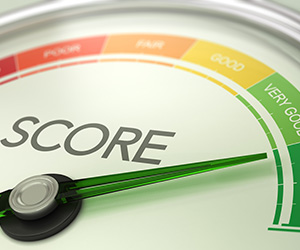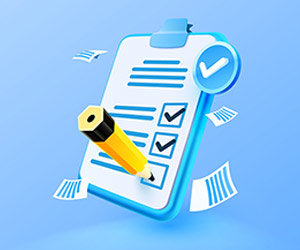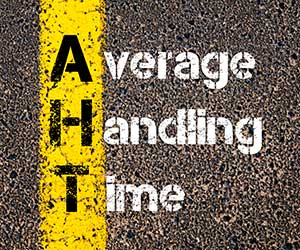Does this sound familiar? “Sigh. I feel like I’m on a scorecard rollercoaster! I feel happy and optimistic when a couple of my scorecard metrics start to improve.
“Then, in the following month, I feel disheartened when these same metrics start to slide. On top of that, despite my coaching efforts, other metrics on my scorecard are at a standstill. I feel a lack of control over my results! It’s incredibly frustrating!”
If you’ve experienced this type of frustration, the solution is relatively simple.

As Afshan Kinder, with 30+ years of experience working across all communication channels in contact centres, explains…
It begins with choosing the right agent metrics that drive the right agent behaviours and actions.
Once this foundational step has been accomplished, it becomes easier to identify and coach the specific skills necessary to drive performance improvement.
Here are her thoughts on the top five agent performance metrics to drive operational excellence:
- Customer Satisfaction Scores
- First Contact Resolution (FCR)
- Ownership
- Net Sales per Hour Coupled with Average Order Value
- Self-Service Tracking
1. Customer Satisfaction Scores
Customer satisfaction at the agent level is tracked through popular methods, such as a Net Promoter Score (NPS) or a Customer Satisfaction survey (CSAT) using a Likert rating scale from 1 to 5.

A rating of 5 means that a customer was ‘Very or Extremely Satisfied’. Industry targets for NPS are typically 60 and above.
For CSAT, most companies aim for 80% and above for a top two box rating (that is, 4 and 5 out of 5).
Measuring customer satisfaction at the individual level allows agents to understand how their tone, skills, and decision-making impacted their customers’ experience.
This score along with customer verbatim comments should initiate collaborative leader–agent discussions, allowing leaders to reinforce an agent’s strengths and to diagnose and coach an area of improvement.
Looking to calculate a CSAT score? Read our article: How to Calculate a Customer Satisfaction Score (CSAT)
Reviewing Over a Longer Period Increases the Sample Size
The challenge in contact centres with customer surveys is that the sample size tends to be small, and the score is not always indicative of the agent’s level of service. This leads to leader and agent inaction.
The best remedy aside from deploying strategies to increase sample size is to look specifically at customer satisfaction scores and verbatim comments trending over 3 to 6 months.
A review of trending over a longer period increases the sample size and allows for a reasonable analysis. Verbatim comments can pinpoint specific skills that an agent is doing well or where improvement is needed.
Track Agent Accuracy and Completeness of Information

to assess customer satisfaction
If your centre is lucky enough to have a direct line to the voice of the customer, let this be the data that drives strategic action and performance improvement.
Some contact centres implement an internal quality assurance (QA) programme to assess customer satisfaction.
This could be due to technical challenges with surveying, compliance with regulatory and privacy requirements, or as an alternative method to obtain additional insights beyond survey results.
These QA programmes tend to be heavily administrative with an abundance of documentation. They come with many challenges, with the top one being a misalignment between what customers want and the various internal opinions of what we want for customers.
The best way to leverage QA programmes is to evaluate areas that a customer can not. For example, QA programmes reap the greatest benefit to organizations when they track agent accuracy and completeness of information, ensuring that a customer doesn’t fail in the next part of their journey.
Measuring compliance with regulatory and privacy requirements is another way QA can add value.
For information on setting up a QA programme, read our article: Call Centre Quality Assurance: How to Create an Excellent QA Programme
2. First Contact Resolution (FCR)
First Contact Resolution (FCR) is a measure of low repeat calls. At the agent level, it reflects their ability to reduce customer effort by answering an enquiry or resolving an issue at the first contact.
A reduction of repeat calls drives higher customer satisfaction while simultaneously reducing operational costs.
Industry target for FCR is 80%, which means that 20% of customers will call in at least a second time due to an organization’s process or other reasons.
The challenge for most centres is identifying the period over which to measure FCR. As the period is dictated by internal processes, for some centres it is 24 hours while in others it can expand to 7 days.
For information on how to calculate FCR, read our article: How to Calculate First Contact Resolution
One Contact Resolution (OCR) Is a New Metric in the Industry
As a side note, a new metric in the industry is OCR or One Contact Resolution. It is defined as the percentage of customers who resolve their enquiry or issue in a single interaction without utilizing another contact channel.
OCR is a strong indicator of overall customer effort at the organizational level and is not measured at the agent level.
3. Ownership
Your agents play a distinct role in building brand loyalty with customers, and it starts by taking ownership in every customer interaction.
Ownership is your customer’s perception of an agent’s willingness to help, demonstrated through your agent’s words and actions.
Consider Asking Your Customers to Rate an Agent’s Willingness to Help
When ownership and prompt resolution go hand in hand, it goes beyond making customers happy; it builds the kind of loyalty where your customers refer their friends and family to your organization and buy more from your company.
Consider asking your customer to rate an agent’s willingness to help in your post-contact satisfaction survey.
If you are looking for information on getting agents to take ownership, read our article: Training Your Team to Take Ownership
4. Net Sales per Hour Coupled With Average Order Value
Many centres like to be seen as profit centres and so take an active role in generating revenue.
There are so many metric drivers when it comes to sales, and my recommendation would be to use net sales per hour as well as average order value.
This two-dimensional view allows leaders to coach to net sales per hour, helping agents transition from service issue resolution to ‘adding value’ conversations.
Once an agent has made this transition, average order value measures their ability to bundle and offer solutions instead of products.
Net Sales per Hour Increases the Likelihood of Customers Having Positive Experiences
The next debate is about the use of gross sales versus net sales. Gross sales are easier to track, but on the other hand, they can lead to poor sales tactics and customer regret.
Net sales per hour increases the likelihood of customers having positive experiences, decreases cancellation rates, escalations, and re-work. Hence my suggestion to incentivize your agents on net sales versus gross sales.
[Note from the Editor: Another way to help customer service agents improve their sales skills and ability to upsell new products to customers is to schedule time for your customer service agents to shadow the sales team – as seen at Fasthosts HQ in Gloucester, UK.]
5. Self-Service Tracking
The Covid-19 pandemic accelerated the number of customers who independently found help through digital channels.
This organically increased the percentage of customers who were familiar with self-service. It is now a much easier transition for agents to talk about self-service to customers.
Customers benefit by gaining autonomy and the freedom to access information or complete a transaction when it is convenient for them.
The benefit to the business is that it is a contact-reduction strategy which translates into cost savings.
This metric is calculated by recording the customer account number during a call with an agent and then identifying whether that same customer logs in within a subsequent 14-day period.
Should you want to enhance your self-service offering, read our article: Ideas to Improve Customer Self-Service
Where Does Average Handling Time (AHT) Fit In?
Many contact centres prioritize metric drivers of efficiency like Average Handle Time (AHT) and schedule adherence.

and other efficiency metrics
However, in my experience, it has become evident that forward-thinking contact centre leaders who embrace the philosophy of ‘Happy employees give you happy customers’ do achieve the balance between quality and efficiency.
When agents have at least 50% of their scorecard focused on making the customer experience memorable, other metrics fall into place, such as reduction of repeat calls, being clear and concise during customer interactions (lower Talk Time), earning customer trust so additional products can be offered (sales), and gaining customer agreement for additional time (promotion of self service).
This is not to say that leaders should ignore AHT, adherence and other efficiency metrics. Keep an eye on these metrics at the organization level and actively engage leaders to deploy an outlier strategy to address and coach their teams to efficiency expectations.
Tracking More Than 5 Metrics Will Dilute What’s Important
Set achievable targets that can be accurately measured. If the targets are too high or there is inaccuracy in the data set, it will lead to agent dissatisfaction, high absence rates and attrition.
Be mindful when you determine the weight for each metric driver. The weight should be hefty enough to make a difference to the agent and to the business.
Including more than 5 metrics on your scorecard will dilute the emphasis on what’s important, which will impact the achievement of your business results.
Lastly, exceptional contact centre leaders do not knee-jerk to each poor result. They analyse data trends and make a sound judgement on the right strategy and actions.
Most importantly, they use scorecards and associated metric drivers to inspire, motivate and make their teams successful.
Written by: Afshan Kinder, ICMI Thought Leader and co-author of 3 books – including ‘Call Center for Dummies’
If you want to learn more about contact centre metrics, read these articles next:
- Call Centre Benchmarking 101
- Top 10 Customer Experience KPIs
- What Are the Industry Standards for Call Centre Metrics?
- Are Your Team Leaders Too Busy Chasing Metrics?
Author: Afshan Kinder
Reviewed by: Megan Jones
Published On: 23rd Jan 2024 - Last modified: 19th Sep 2025
Read more about - Call Centre Management, Afshan Kinder, Customer Satisfaction (CSAT), Editor's Picks, First Contact Resolution (FCR), Management Strategies, Metrics, Performance Management, Self Service, Top Story





















